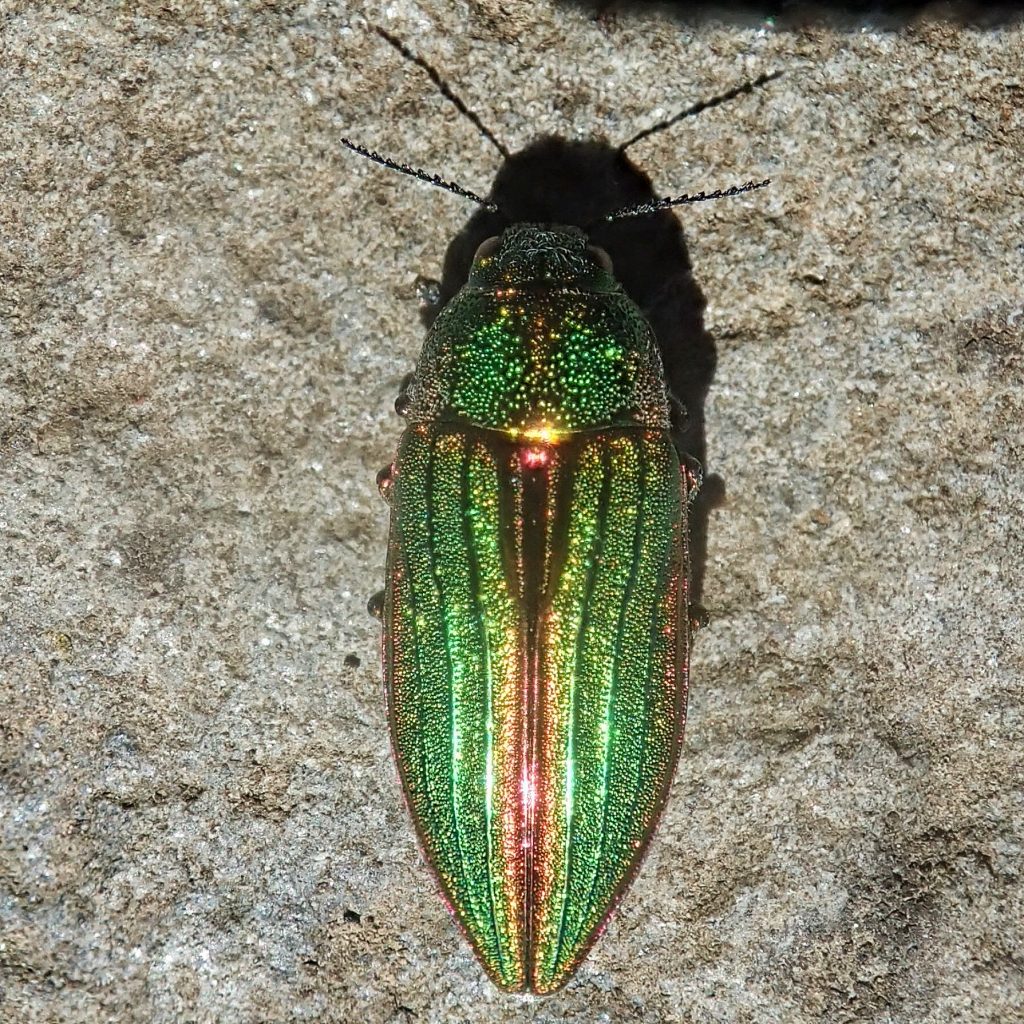
During last Sunday’s nature stroll on the Cape Horn Trail, in addition to the thrill of finding that rare, vagrant Black-throated Sparrow (which I’ve been informed was only the second documented sighting of that bird in Skamania County), I was also lucky enough to find my first free roaming Buprestis aurulenta (family Buprestidae-metallic wood-boring beetles). The very first one I found was last spring (during my first week back to work after a short, pandemic induced layoff), when it literally dropped into my lap as I was sitting in my van. I didn’t know what it was, except that it was spectacular and beautiful, and I didn’t have a camera with me, so I trapped it with one hand, while frantically hunting for an insect container with the other.
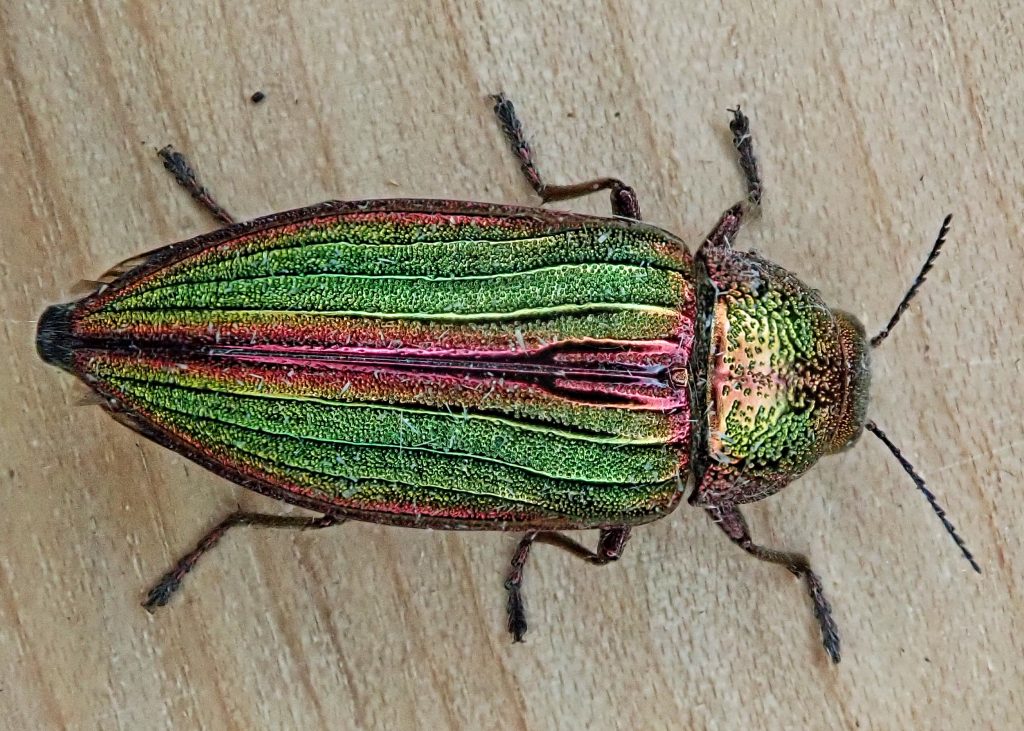
And, actually, I didn’t find this one either. It was spotted by my eagle-eyed wife. Pam, in addition to not being color blind or having an agenda (I miss a lot of bugs looking for birds, or miss birds looking for wildflowers, or miss everything looking for lichen-I’m like a trout that keys in on ‘the hatch’ and misses the grasshoppers, beetles, and grubs floating by), is also very observant and has found numerous cool lifeforms over the years.
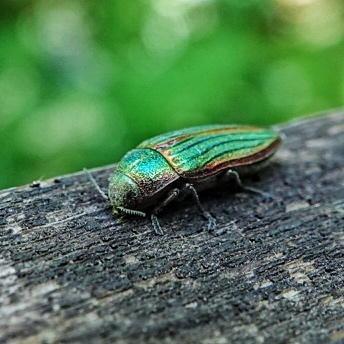
Anyway, Pam spotted this gorgeous beetle on a chunk of rock, and I recognized it immediately, and started snapping photos. It got a bit antsy so I relocated it to a chunk of wood in the shade for a few more photos, but it soon tired of the game and flew off. I thought that was the high point of the day, but then I saw the Black-throated Sparrow…
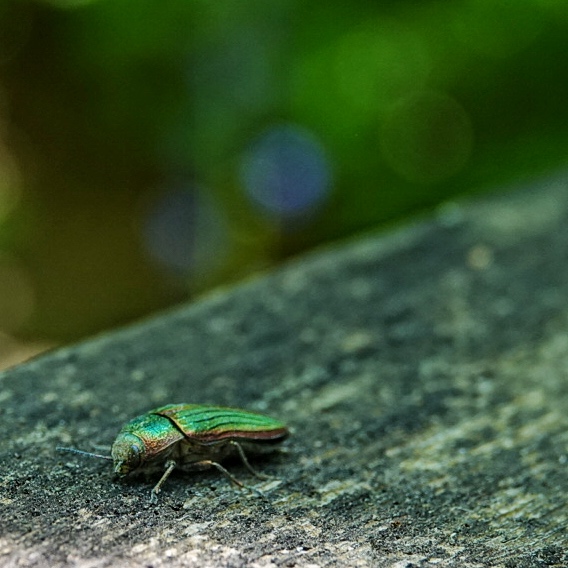
So, this is really cool. Golden Buprestids lay their eggs in the wood of dead and dying trees (naturally downed trees, ones with major bark wounds, and those killed by fire, although severely charred trees are usually avoided), and the larvae eat that wood. Sometimes those logs get ‘salvage logged’. The processing, especially the drying, of that wood causes the larvae to go into diapause. As long as the wood isn’t treated the larvae will survive, and emerge from diapause, but the process may take years. Which means that, up to 30 years after they were born, mature Buprestis aurulenta (and other buprestids as well), may emerge from furniture or house framing!
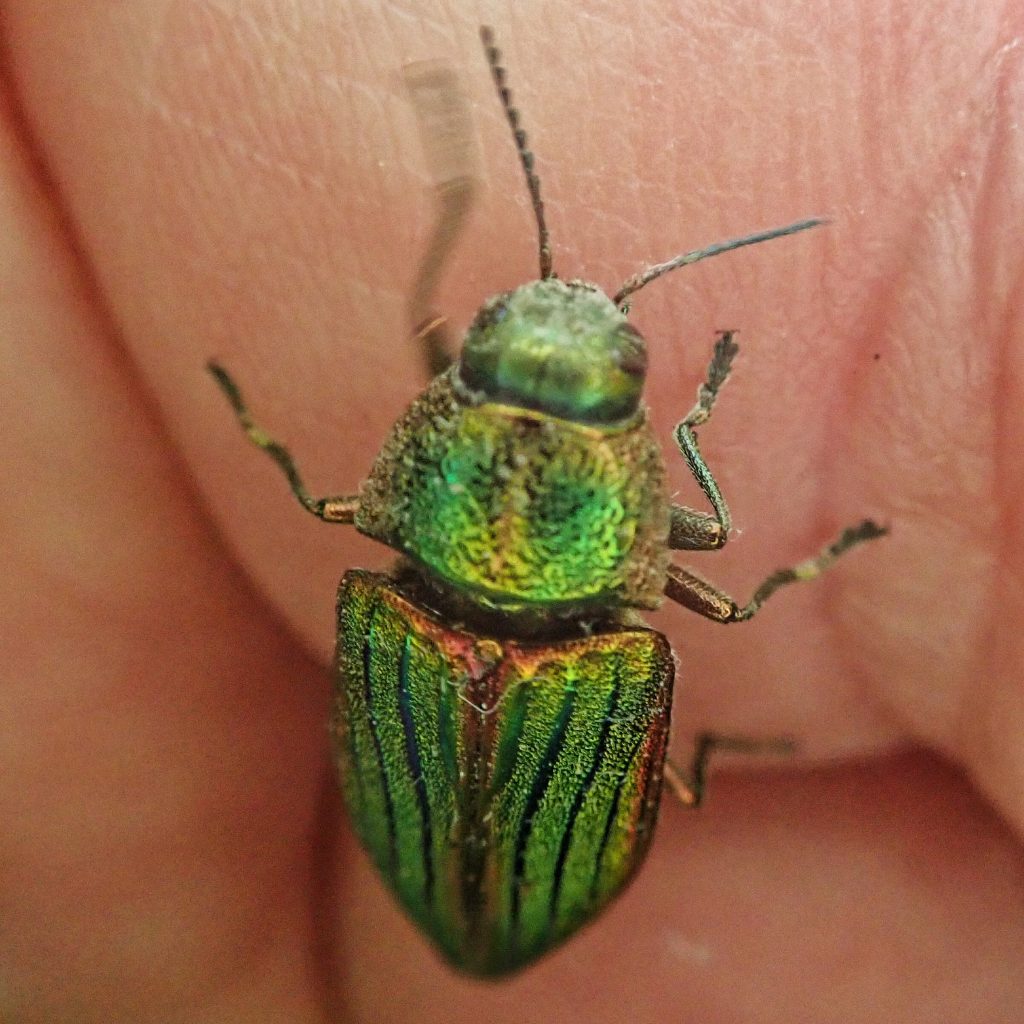
This is a native species and is not usually considered to be a pest, but only because their population doesn’t tend to become dense. In fact they perform a vital function in the breakdown of logs. And actually they do double duty, because their galleries allow certain saprophytic fungi to access the interior of the log and begin breaking down the cellulose. Which in turn benefits the larvae by releasing nutrients that the larvae can then ingest.
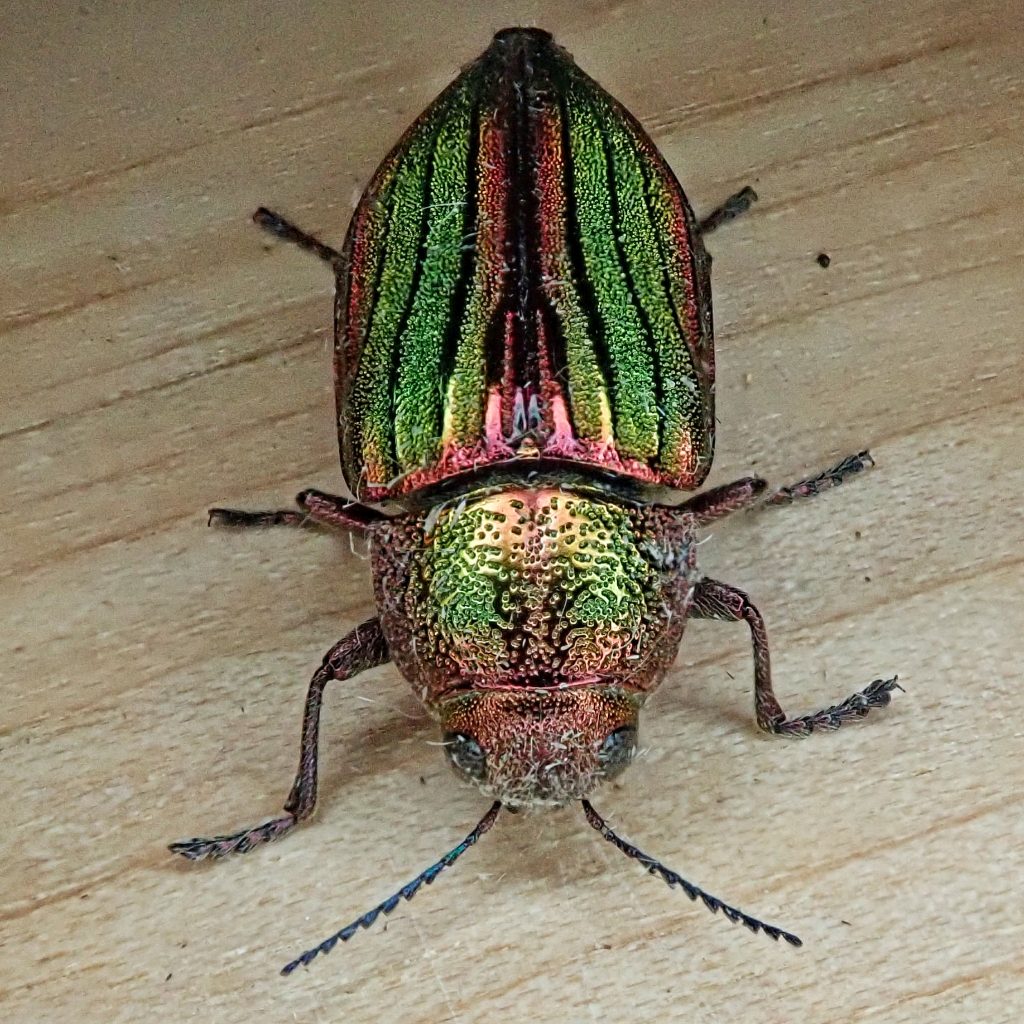
Description-Large (up to 20mm long), brassy green to golden beetle, with blue/purple highlights and coppery orange margins; 5 widely spaced ridges on each elytron.
Similar species–B. adjecta and other greenish gold Buprestis spp. have 6-10 narrowly spaced ridges on each elytron.
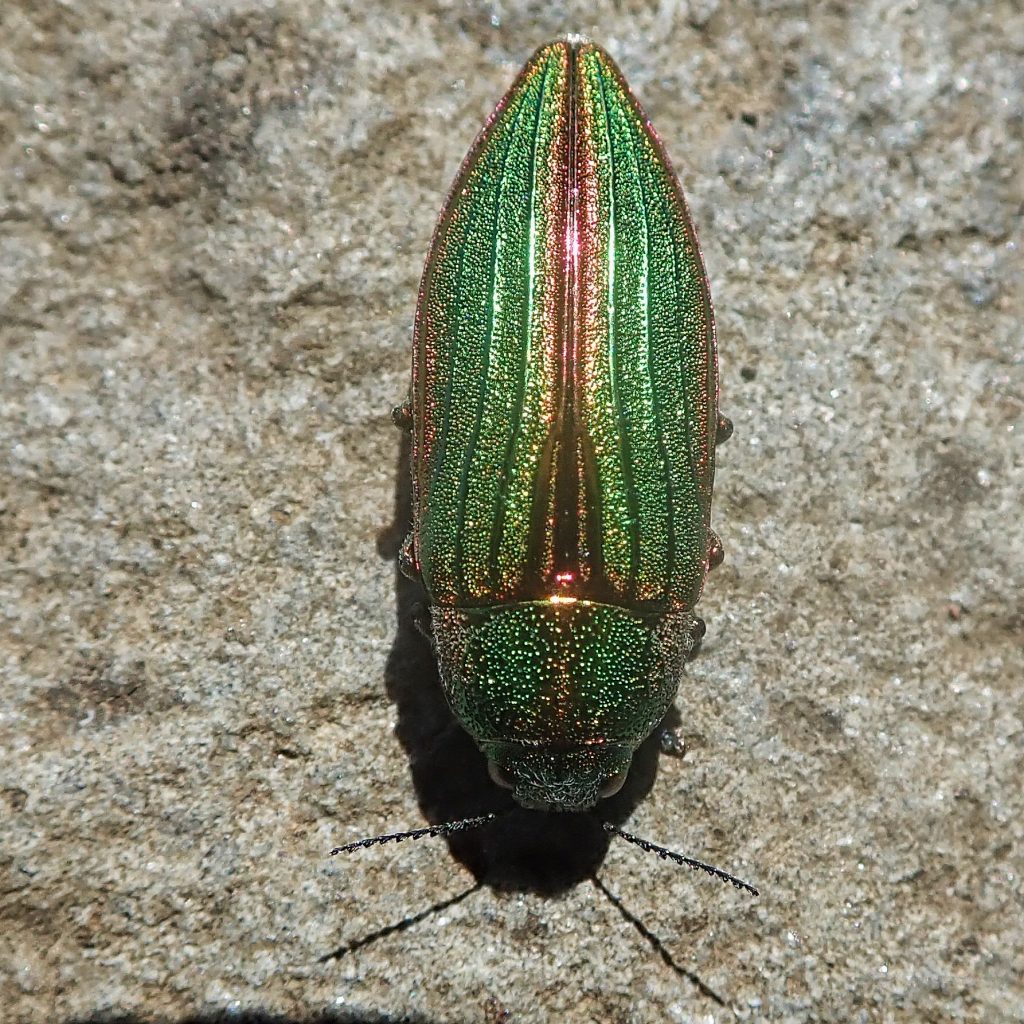
Habitat-Conifer forests
Range– Western North America; region wide in appropriate habitat.
Eats-Larval hosts are conifers, primarily Douglas fir when available; adults feed on needles and bark of living conifers.
Reproduction– Eggs are laid on the bark of dead and dying conifers, and the grubs bore into the wood. Adults usually emerge in 2-4 years.
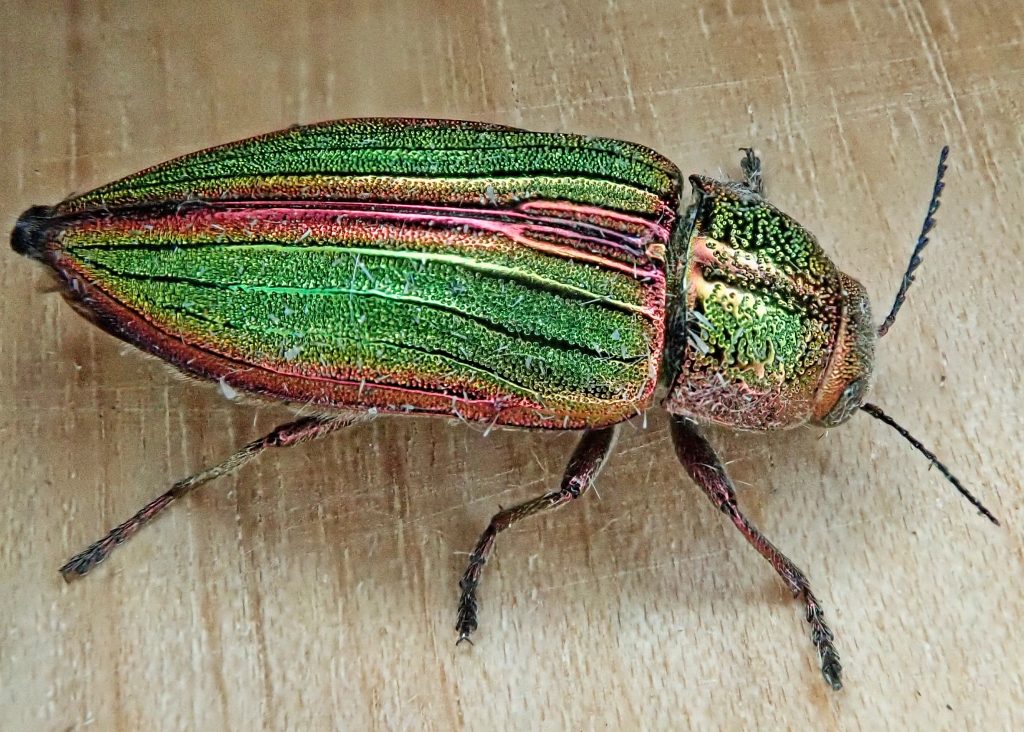
Adults active-Have been seen from February to September, but most common from April to August.
Etymology of names–Buprestis is from the Greek and means ‘burn cow’. Apparently the Romans conflated these beetle with some blister beetles (Meloidae, a completely different family) that would poison cattle if ingested, and therefore called many colorful beetles ‘buprestis’. The specific epithet aurulenta is from the Latin for golden. No mystery what that references.
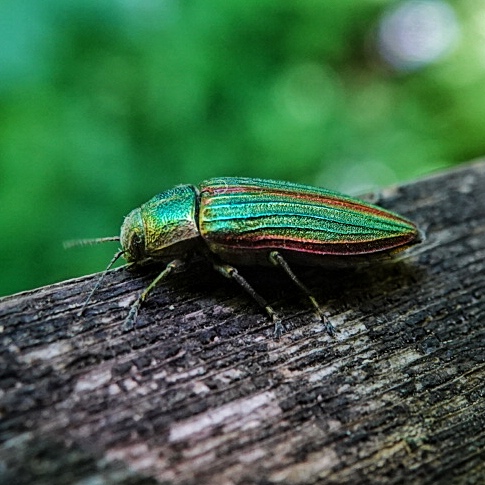
https://www.mtpr.org/post/bug-bytes-golden-buprestid
https://ir.library.oregonstate.edu/downloads/sf2685624
https://tidcf.nrcan.gc.ca/en/insects/factsheet/306
https://bugguide.net/node/view/74029
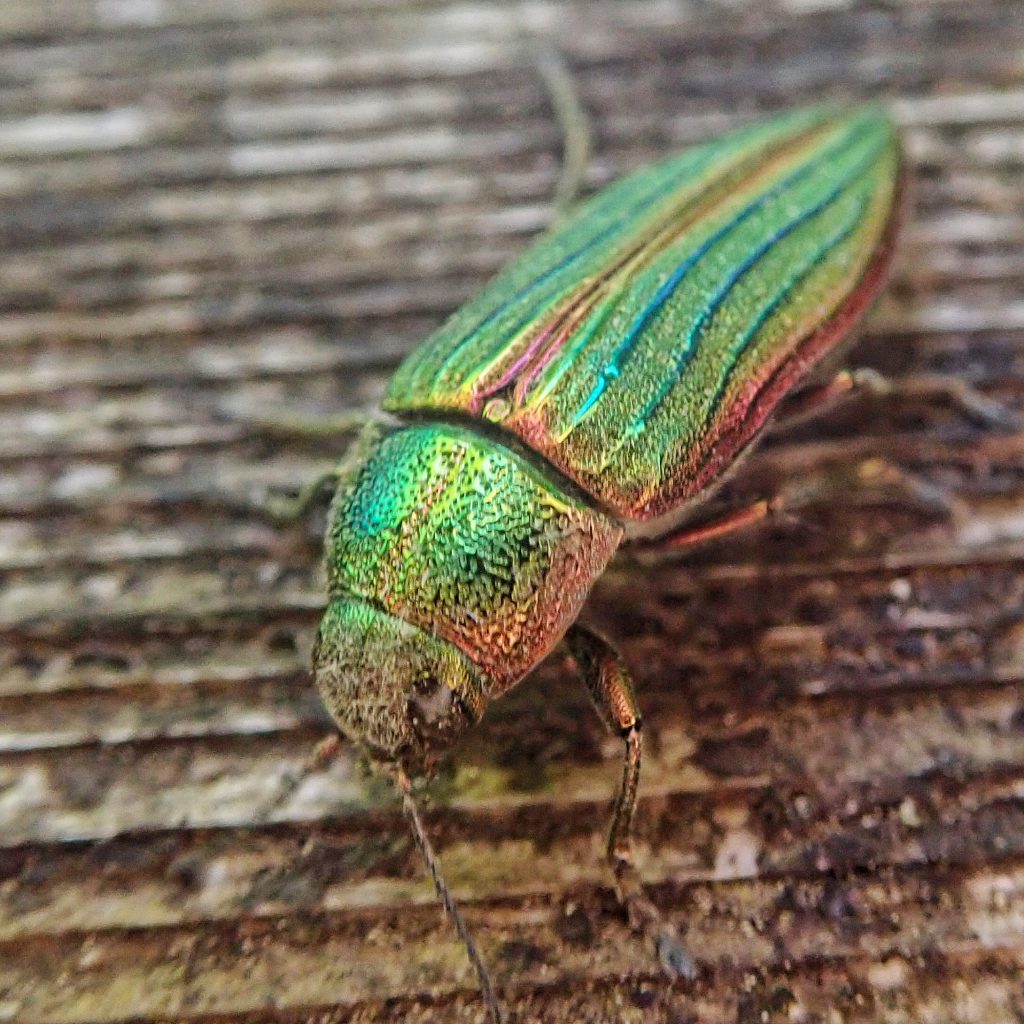
Very interesting! Thank you ☺️
Love the story. Had this gorgeous beetle land on the car. Posed for a shot then winged off. My gardening go to pal sent link to this blog. Wow ! Buprestids are super cool ! Thanks
Thank you for your appreciation! Glad it was helpful!
I found one inside my home in south King County. Absolutely stunning! Set it free outside. I’ve never seen one before. It’s bronze belly is what I saw first as it was spinning on its back when first discovers.
They are amazing looking! Thanks for setting it free!
One landed on me today. I brushed it off, and I thought it was a “June beetle.” I looked for it on the web and found the accepted common name and scientific name on this site. Great photos – thank you from Brookings, OR.
Thanks Frank! So glad to hear the site was useful in a timely way!
I was camping in eastern Wyoming, and I saw a flash of shiny green on the ground. I knew that my brother loves beetles, so I brought it home. Now I know what to feed it!
Very cool, Ellie! I hope your brother enjoys the gift!
You are a gifted writer with a talent for bringing the reader into the experience and sharing the sense of fascination. Spectacular photo accompaniment as well.
Wow! Thanks Ted!